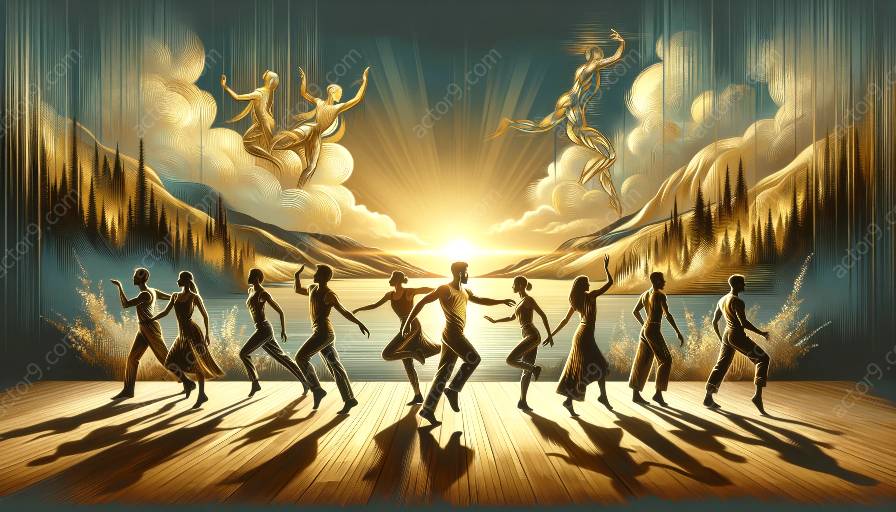The art of physical storytelling is an integral part of both film and live theater, but the manner in which it is employed can differ significantly. This topic cluster will delve into the similarities and differences between physical storytelling in these two mediums, exploring how physical storytelling techniques intersect with acting techniques to create compelling narratives.
Physical Storytelling Techniques in Film
Physical storytelling in film relies heavily on the visual and spatial elements of storytelling. Directors and cinematographers use various camera angles, movements, and framing to convey the physicality of the characters and their environment. This allows the audience to experience the story through the characters’ physical movements and interactions.
Similarities with Live Theater
At its core, physical storytelling in film shares similarities with live theater in the sense that both mediums rely on the physicality of the performers to convey emotions, actions, and relationships. In live theater, actors use their bodies and movements to express a character's feelings and intentions to the audience. Similarly, in film, actors and directors utilize physicality to communicate emotions and narrative elements visually.
Differences in Approach
One key difference lies in the use of close-ups and editing in film, which allows for a more detailed exploration of physical nuances. In live theater, the audience experiences the physical performances in real-time and from a distance, without the manipulation of close-up shots or editing techniques. Additionally, space and set design play a different role in each medium, with filmmakers having the ability to create and control environments through set design and digital effects, compared to the more tangible and immersive nature of live theater sets.
Physical Storytelling Techniques in Live Theater
In live theater, physical storytelling is a direct and immediate form of communication between the actors and the audience. The performers use their bodies, gestures, and movements to convey the story, often relying on the interaction with the audience to enhance the narrative impact. The use of the stage and the physical proximity to the audience create a unique environment for physical storytelling to unfold.
Similarities with Film
Despite the differences in medium, the fundamental goal of physical storytelling remains the same in both live theater and film: to communicate narrative, emotions, and themes through physical actions. Both mediums seek to engage the audience visually and emotionally through the physical performances of actors, whether in a live setting or through the lens of a camera.
Collaboration with Acting Techniques
Physical storytelling techniques intersect closely with acting techniques in both film and live theater. Actors in both mediums must master the art of physicality to effectively convey their characters’ emotions and intentions. Movement, posture, facial expressions, and non-verbal communication are all crucial components of physical storytelling that require adept acting skills.
Emotional Expression
In both film and live theater, actors rely on physical storytelling to express a wide range of emotions, from subtle nuances to powerful gestures. They must harness their body language and movement to convey the depth of their characters’ emotional journeys. This requires a deep understanding of acting techniques to ensure that the physical performance aligns with the character's inner experiences.
Character Development
Actors utilize physical storytelling techniques to embody their characters and bring them to life on stage or screen. Through the use of physicality, actors can communicate a character's personality, motivations, and conflicts, enriching the narrative through their movements and gestures. This integration of physical storytelling with acting techniques contributes to the immersive nature of storytelling in both film and live theater.
Conclusion
Physical storytelling in film and live theater presents a captivating intersection of visual, spatial, and performative elements. While both mediums share the fundamental purpose of engaging audiences through physical storytelling, the specific techniques and approaches vary based on the inherent characteristics of film and live theater. By exploring these similarities and differences, we gain a deeper understanding of how physical storytelling techniques intertwine with acting techniques to create dynamic and impactful narratives.













































